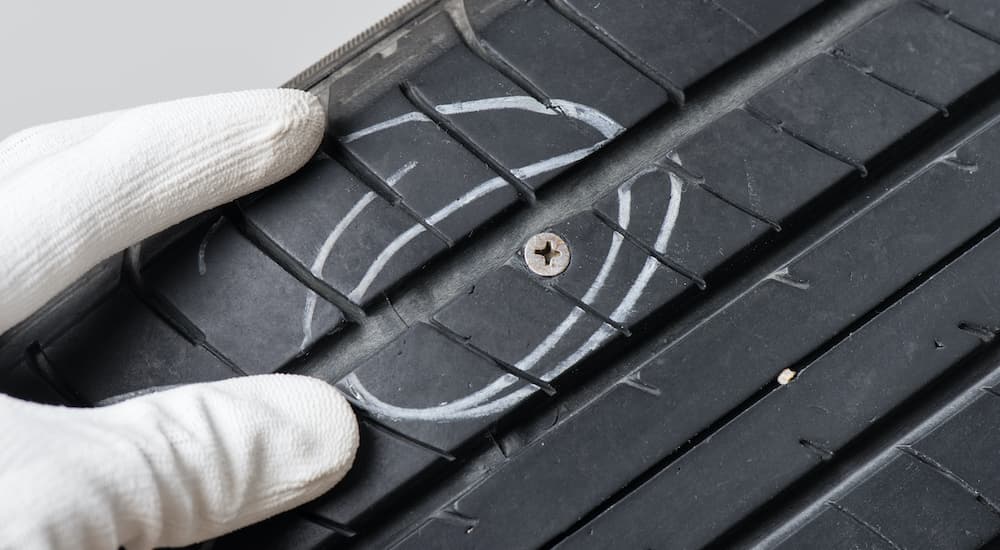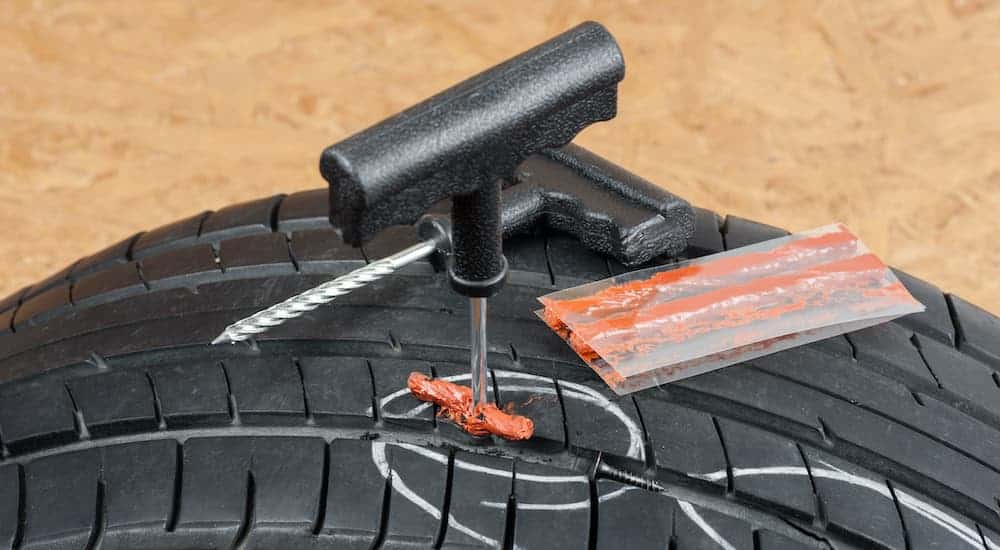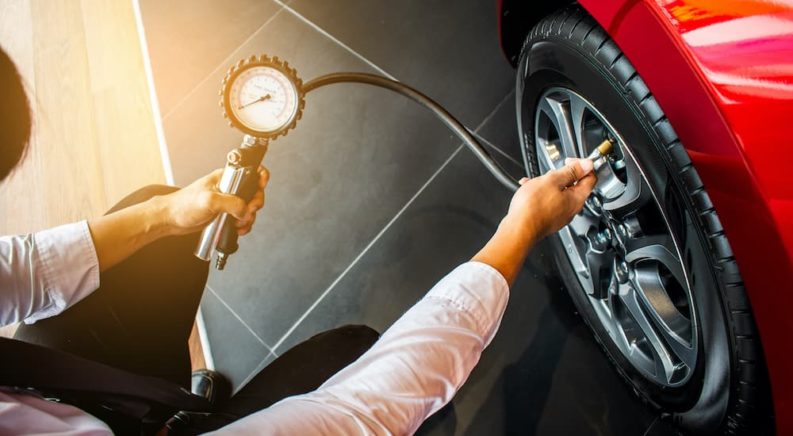Tires are a tough subject. They’re absolutely critical to all modes of transportation, but they inevitably wear down and become unusable. It’s no stretch to say that millions of tons of waste tires are discarded every year as drivers like you return to the tire shop for something new. If you know what you’re looking for, though, you might find that the “something” isn’t a whole tire but rather a set of treads. Retreading, also known as “recapping” or “remolding”, is a process through which a worn tread on an otherwise structurally sound tire is replaced, giving the tire new life and postponing its arrival in a garbage heap.
When performed professionally, retreading can consume only 20% as much material as is needed to make a brand new tire (including a significant reduction in oil consumption) and reuses up to 90% of the original tire. Those savings are passed on to the consumer, with retreaded tires costing 30-60% less than new ones of similar quality. Most tires can be retreaded two or three times before the structural integrity of the casing (the rest of the tire – bead, sidewall, crown, inner liner, cords, etc) is compromised, and the tread service life of a retreaded tire can exceed 80% of a brand new one. If every new tire were retreaded twice instead of being discarded, the number of tires going into landfills could be reduced by nearly 2/3, and the materials consumed for manufacturing would be cut in half.
Tire Inspection
When a tire shop receives a tire for retreading, the very first thing that needs to happen is an inspection. Skilled technicians will inspect each tire for defects – their trained eyes easily identify subtle clues that a layman might miss. Screws and rocks will be removed, and areas with known or suspected damage will be marked for repair. The interior liner will be electrically inspected for nail holes, which might be hard to see but will spark when a charged testing device runs over them.
“Shearography” inspection uses laser photography to compare the appearance of the tire under normal pressure to the appearance when under vacuum. This allows for the detection of inner-layer defects and air pockets that swell under vacuum. The comparison of the pictures can be fully automated using software to reduce costs. Suspected sidewall and bead issues can also be examined using X-Ray photography, a technique used by Michelin in their retreading process; this allows the underlying steel to be checked for “most suspected steel conditions such as curbing, impact, fatigue and run-flat.”
A surprising number of defects can be repaired before retreading. A robust inspection process ensures that all salvageable casings get repaired while genuinely unsafe casings are rejected. Even then, some good can come from a rejected casing. For example, Marangoni burns rejected tires and uses the energy from the fire for heat and electricity, then recovers the remains.

Buffing and Repair
Before damage can be repaired and a new tread applied, the remains of the old tread need to be removed from the tire. This is accomplished by buffing, a process that uses blades to shave off tread rubber. The process is carefully controlled so that a specific amount of “undertread” remains, and so that the roughness and evenness of the surface are precise to predetermined specifications. Michelin’s process has over 1000 buffing profiles, as an example, with each one tuned to a specific design.
While the buffing process produces waste in the form of shavings, it’s not a total loss. CalRecycle sends the shavings to be made into the ergonomic floor mats used by their technicians; manufacturers using a “mold cure” technique (more on that later) will use the powder as a mold release, so the tire easily separates from the tread mold. The rubber that can’t be recovered or burned off is often broken down for use as synthetic turf or raw material for other rubber products, limiting the waste going into our landfills and oceans.
After the tread has been buffed away and the surface has been brushed to remove dust, tires in need of repairs are sent to workstations where damaged areas are removed and replaced with fresh rubber. This way, repairs are permanent, far more effective than pulling a plug through the tire. Holes get drilled out; injuries and rust on the interior steel cords get skived away. That’s a removal process performed with a handheld grinding wheel to remove steel and rubber that’s been damaged by corrosion, rocks, and other penetrations.
In the case of holes through the rubber, technicians apply black cement to the area around the hole, fill the hole with fresh raw rubber, and bond a seal to the cement to eliminate it. Skives get filled in with fresh rubber during tread application – before sending the tire off, the repair technicians will clean skives with a wire brush and apply cement to the skive to seal it and improve local adhesion.
Tread Application
Repaired tires are finally ready to have a new tread installed. There are two primary techniques, called “mold cure” and “pre-cure”, to achieve this. Both have their merits – pre-cure is more popular and friendly to high-volume processing, while mold cure has appeal for being a “purer” form of processing. In either process, the tire is first coated with raw “cushion gum” (uncured rubber). This serves as an adhesive to bond the tread rubber to the casing with an unbreakable chemical seal, while also filling in skives in the outer surface of the tire.
Then the tread rubber is applied. In the pre-cure process, the tread has already been molded and cured in a long strip so that it can be wrapped around the casing. A technician finishes the wrapping by applying a seam strip to the end of the tread, bonding it to the front of the tread and pressing the tread flat onto the casing. The rubber seam strip ensures that, like a metal weld, the seam is the strongest part of the tire.
In a mold cure process, the casing is wrapped with a strip of heated uncured rubber. The number of layers depends on the specs of the tire. Once the entire surface of the casing is wrapped up, the tire is placed in a mold. An inflatable insert supports the tire from the inside as the mold presses the outside, shaping the tread and curing the rubber with heat and pressure.
The tread rubber conforms to the shape of the mold and chemically bonds to the casing as if brand new – although each mold only produces one tire every couple of hours, you can see how this process might be perceived as more authentic. However, the pre-cure process allows much higher production volume. Tires freshly wrapped in new tread are then covered by rubber envelopes, which are vacuum sealed to hold the treads to the casings with uniform pressure. Then dozens of enveloped tires are loaded to an autoclave, a giant pressure cooker designed to cure the rubber at high heat and pressure. After 2-4 hours, the entire batch of tires is cured and ready for the final inspection.

The Reincarnation of a Tire
After seam flashing is removed with specialized combs, retreaded tires will be inspected using many of the same non-destructive initial inspection techniques to make sure they carry no defects. Customer specs are verified, and completed retreads are shipped out. While retreading can’t extend the life of a tire indefinitely, the casing and steel cords inside it have an operational life several times longer than any tread. Bandag, a pioneer and industry-leader in retreading, notes that Bridgestone, Michelin, and Goodyear all certify their premium tires for at least 3 retreading cycles, so the life of a tire can be hundreds of thousands of miles longer than the life of a single tread.
It’s not exactly something the average mechanic can do in their garage, but drivers who pursue retreading will find the cost savings vs. new tires to be an immediate benefit. They’re likely to find that the retreaded tires perform as well as the originals for commercial and even off-road performance applications. And the process, while complex in the number of variables and techniques one can employ to optimize it, is fundamentally quite simple and enormously beneficial to the environment. So the next time you see Abe Lincoln’s head above your tread, and you’re shopping for new tires, ask your local tire shop how you can retread instead.

